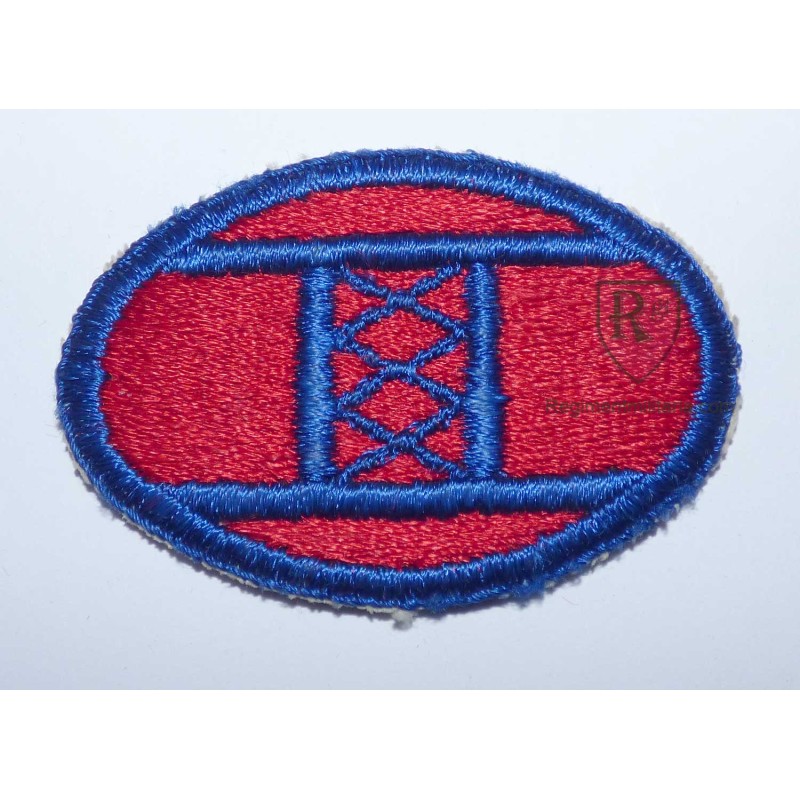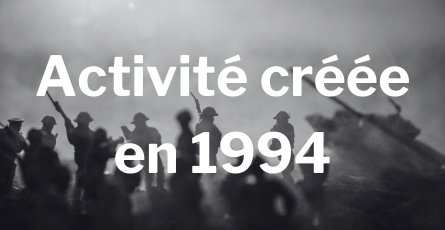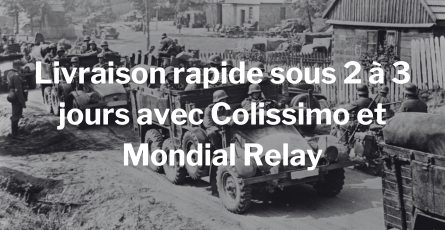
Reference: U2E709
Banner

Banner




30th Infantry Division cut edge Patch.
 Garanties sécurité
Garanties sécurité
(à modifier dans le module "Réassurance")
 Politique de livraison
Politique de livraison
(à modifier dans le module "Réassurance")
 Politique retours
Politique retours
(à modifier dans le module "Réassurance")
30th Infantry Division cut edge Patch. original, WW2.
It landed at Omaha Beach, Normandy, on 11 June 1944, five days after the initial D-Day landings of 6 June 1944, secured the Vire-et-Taute Canal, crossed the Vire River on 7 July.[7] Beginning on 25 July, the 30th Division spearheaded the Saint-Lô break-through of Operation Cobra, which was intended to break out of the Normandy beachhead, thus ending the stalemate that had occurred.
During the battle of Mortain, Typhoons devastated German tank and mechanized columns attempting to reach the French coast, 7 August 1944.
During the operation, on both 24 and 25 July, the 30th Division encountered a devastating friendly fire incident. As part of the effort to break out of the Normandy hedgerows, US Army Air Forces (USAAF) bombers from England were sent to carpet bomb a one-by-three-mile corridor of the German defenses opposite the American line. However, USAAF planners, in complete disregard or lack of understanding of their role in supporting the ground attack, loaded the heavy B-24 Liberator and B-17 Flying Fortress bombers with 500-pound bombs, destroying roads and bridges and complicating movement through the corridor, instead of lighter 100-pound bombs intended as antipersonnel devices against German defenders. Air planners switched the approach of attack by 90 degrees without informing ground commanders, thus a landmark road to guide the bombers to the bombing zone was miscommunicated as the point to begin the bombing run. Start point confusion was further compounded by red smoke signals that suddenly blew in the wrong direction, and bombs began falling on the heads of the American soldiers. There were over 100 friendly fire casualties over the two days, including Lieutenant General Lesley J. McNair, commander of Army Ground Forces.
The division relieved the veteran 1st Infantry Division near Mortain on 6 August.[8] The German drive to Avranches began shortly after. The 30th Division clashed with the elite 1st SS Panzer Division, and fierce fighting in place with all available personnel broke out. The division frustrated enemy plans and broke the spearhead of the enemy assault in a violent struggle from 7–12 August. After the liberation of Paris, the division drove east through Belgium, crossing the Meuse River at Visé and Liège on 10 September. Elements of the division entered the Netherlands on 12 September, and Maastricht fell the next day. Moving into Germany and taking up positions along the Wurm River, the 30th Division launched its attack on the heavily defended city of Aachen on 2 October 1944, and succeeded in contacting the 1st Division on 16 October, resulting in the encirclement and takeover of Aachen.
Men of the 117th Infantry Regiment, part of the 30th Infantry Division, move past a destroyed American M5 "Stuart" tank on their march to capture the town of St. Vith at the close of the Battle of the Bulge, January 1945.
After a rest period, the 30th Division eliminated an enemy salient northeast of Aachen on 16 November, pushed through Alsdorf to the Inde River on 28 November, and then moved to rest areas. On 17 December the division rushed south to the Malmedy-Stavelot area to help block the powerful enemy drive in the Battle of the Bulge—the Germans's last attempt to win a decisive victory over the Western Allies. Again the division met the 1st SS Division, and again broke the spearhead of their assault. The 30th Division launched a counterattack on 13 January 1945 and reached a point 2 miles south of St. Vith, Belgium on 26 January, before leaving the battle and moving to an assembly area near Lierneux on 27 January, and to another near Aachen to prepare for attack deeper into the western edge of Germany at the Roer River. The Roer was crossed on 23 February 1945, near Jülich.
The 30th moved back for training and rehabilitation on 3 March, and on 24 March made its assault crossing of the Rhine. It pursued the enemy across Germany, mopping up enemy pockets of resistance, took Hamelin on 7 April, Braunschweig on 12 April, and helped to reduce Magdeburg on 17 April. As the 30th was capturing Braunschweig, elements of the Division also liberated Weferlingen, a sub-camp of Buchenwald. Approximately 2,500 prisoners were freed through the efforts of the 30th.[9] The Russians were contacted at Grunewald on the Elbe River. The end of World War II in Europe came soon afterwards and, after a short occupation period, the 30th Division began its return to the United States, arriving on 19 August 1945. The surrender of Japan followed soon, which brought the war to an end, and the division was subsequently deactivated on 25 November 1945. By its disbandment, It had spent a cumulative 282 days in combat and had participated in the campaigns and battles of Normandy, Northern France, Rhineland, Ardennes-Alsace and Central Europe.
Reference: U2E709
Reference: F1E462
Reference: A2E1319
Reference: U2E749
Reference: U2E777
Reference: FEM049
Reference: USP288
Reference: IND247

30th Infantry Division cut edge Patch.
check_circle
check_circle